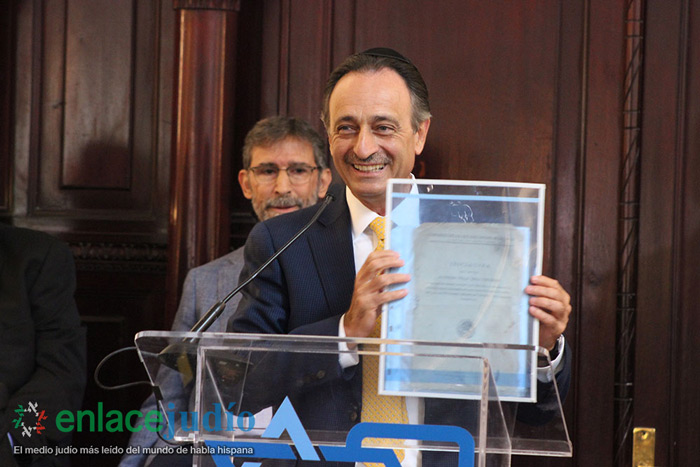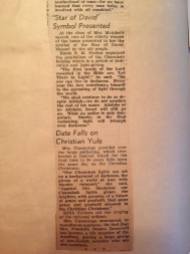
On the evening of June 20, 1947, notorious Jewish American gangster Benjamin “Bugsy” Siegel was shot and killed in Beverly Hills, California. The next day the news would make all the major world newspapers which had made him so famous.
Benjamin Siegel was born on February 28, 1906 in Williamsburg, Brooklyn, New York. He was the second of five children of Max and Jenny Siegel, both of them Jewish immigrants from Letychiv, Podolia, in Poland. They later moved to Manhattan’s Lower East Side, which was a hotbed of crime. It didn’t take long before their son discovered he had a taste for life on the street.
In communities like this filled with many poor, immigrant, ethnic minorities of many nationalities, for self protection just about every ethnic group had their own gangs, first created for self-protection against racial attacks and also police abuse. Eventually the successful gangs would create protection rackets, shaking down local shops and businesses to pay them to avoid any “unfortunate accidents.”
Consider this, at the turn of the 20th century there are these groups of immigrants being discriminated against, abused and taken advantage upon arrival in the United States – Italian, Eastern European Jewish, Irish, Polish, and many others. Their families had come to America being drawn by stories of the streets being paved with gold, and justice and equality. But when they got here they found poverty, harsh working conditions, prejudice, and the trials of often being relegated to older and rougher neighborhoods. And this made them as mad as hell. And some intended to get their share of the all-American pie, by any means necessary.
This reality bred full on mobsters in these low-income and working-class communities, wiseguys who first considered themselves businessmen to be respected and not to be messed with. And if they screwed the system over, no matter; it was just them taking back what they felt they actually deserved from the system.
Also for many working-class minorities that often felt weak and unable to fight back against abuse, to many these guys had the allure of being the tough guys and therefore commanded a certain level of respect, as they walked by in their flashy tailor made suits. This all providing an allure to this life of crime for many young men whose families were struggling as underpaid laborers.
Benjamin’s life of crime began early, when he dropped out of school and, at age 14, joined up with a gang on Lafayette Street on Manhattan’s Lower East Side. Early friends and accomplices included Moe Sedway, with whom Siegel started a protection racket, extorting pushcart peddlers for a regular payoff and burning their carts if they didn’t pay up; and also Meyer Lansky, who remained his partner in crime until the end of Siegel’s life.
Siegel’s violent temper and dramatic mood swings caused friends to remark that he was “crazy as a bedbug.” Hence “Bugsy,” a nickname he actually despised. Siegel had befriended fellow Jewish gangster Meyer Lansky when he was a teenager. Together they formed “The Bugs and Meyer Mob,” a violent Jewish gang on the Lower East Side that specialized in extortion; and hijacking trucks of bootleg liquor from other mobsters during prohibition, one of the mob’s biggest forms of income and which came with fierce competitions.
This outfit eventually morphed into the mob’s group of killers-for-hire that became known as “Murder. Inc.”
In time, the Bugs and Meyer Mob had been absorbed by “the Syndicate,” a loose coalition of organized-crime families that coalesced in the early 1930s. At the insistence of mobsters such a Ben Siegel and Meyer Lanksy, the Syndicate had a branch devoted specifically to enforcement, which the press dubbed Murder Incorporated. Siegel himself is estimated to have been directly responsible for some 30 assassinations of other crime figures.
Siegel was known as one of the most infamous and feared gangsters of his day. Described as handsome and charismatic, he became one of the first front-page celebrity gangsters. Siegel was not only influential within the Jewish mob but, like his friend and fellow gangster Meyer Lansky, he also held significant influence within the Italian-American Mafia and the largely Italian-Jewish National Crime Syndicate.
Now Siegel was a rather good-looking man. Though it needs to be noted that he put a lot of thought into his appearance. Buying the finest tailored Italian suits and silk shirts. He was even a bit vain, applying face creams each night and sleeping with a chinstrap to keep his skin taut.
“Class,” Siegel insisted, “is the only thing that counts in life … Without class and style a man’s a bum, he might as well be dead.”
In 1936, Siegel headed for Los Angeles, after rivals put out a contract on his life, but also because he had the opportunity to take over the gambling rackets on the West Coast. He began socializing with movie stars, but – sociopath that he was – Siegel also borrowed money from his new friends, with no intention of returning it. He reasoned that celebrities would lack the nerve to publicly pursue the money. During his first year in LA, he is said to have taken in some $400,000 in loans this way.
He also was influential in the creation of the Las Vegas Strip. In the mid-1940s, Siegel loaned money to nightclub owner William Wilkerson, who was building the Flamingo Hotel in Las Vegas, which Siegel was to supply with gambling services. When Wilkerson went over budget, Siegel forced him to turn the entire project over to him. When it opened, on March 1, 1947, the Flamingo was the most expensive and luxurious in Las Vegas – but also seriously over budget; it had cost $6-million to complete, which today is equivalent to $60-million.
Also, he was supposed to be reporting business from the western states, and paying the mob back for their investment in his Las Vegas casino too. Though he was suspected to have been skimming money off the books during the construction of the casino, which put him in their sights. Though he eventually got brazen and announced to his mob colleagues that he was running the California syndicate all by himself and that he would return loans in his “own good time”. Despite his defiance to the mob bosses they were patient with Siegel because he had always proven to be a valuable man.
He did turn around the business in Las Vegas eventually, with the support of Meyer Lansky himself. However, it appears that by the time profits began improving the mob bosses above Siegel were tired of waiting.
And so he was shot dead while sitting on the couch in the home of his girlfriend in Beverly Hills.
The day after Siegel’s death, the Los Angeles Herald-Express carried a photograph on its front page from the morgue of Siegel’s bare right foot with a toe tag. Although Siegel’s murder occurred in Beverly Hills, his death thrust Las Vegas into the national spotlight as photographs of his lifeless body were published in newspapers throughout the country.


He was laid to rest in Los Angeles, at the famed Hollywood Forever Cemetery; in the Beth Olam Mausoleum, in the Jewish section.


It should be noted that on account of his burial and that of other gangsters at this cemetery located behind Paramount Studios, many Jewish Hollywood studio families who had already purchased plots at this cemetery years before, they later refused to be buried next to this gangster which they considered too low brow and which they didn’t want to associate with even in death; so most Hollywood studio families and celebrities chose to be laid to rest at Home of Peace Cemetery in East Los Angeles.
In the Bialystoker Synagogue on New York’s Lower East Side, Siegel is memorialized by a Yahrtzeit (remembrance) plaque that marks his death date so mourners can say Kaddish for the anniversary. Siegel’s plaque is below that of Max Siegel, his father, who died just two months before his son.

On the plaque is revealed his actual Hebrew name; Berush bar Mordechi David ha-Levi. Though not one you would expect to call up for the second reading from the Torah scroll, as is the custom during Torah Services to call up a Cohen and then a Levite in honor of their religious heritage before the rest of the congregation of Israel; he was a bad Jew, but in his own way he was still a Jew at times.
As the story is told, he was handsome and well know enough that he had several relationships with actresses, including socialite Dorothy DiFrasso, the wife of an Italian count. The alliance with the countess took Siegel to Italy in 1938, where he met Benito Mussolini, to whom Siegel tried to sell weapons. He also met Nazi leaders Hermann Göring and Joseph Goebbels, to whom he took an instant dislike and later offered to kill them. He relented because of the countess’ anxious pleas. Oh, to have been a fly on the wall of that room!
On the Hebrew calendar his Yahrzeit falls on Gimmel Tammuz – the 3rd day of the Hebrew month of Tammuz.
Now, a personal story from the Barrio Boychik. Did you know that from toddler-age until around 8 years of age my family and neighborhood nickname was “Bugsy,” after this badass. There are even old pictures out there with this nickname on my birthday cake and all. They thought I was more trouble than a gang of vatos locos, so they gave me a nickname of an even scarier Jewish gangster. It was a not so inside joke, from my rambunctious childhood. True story!






























 There is one shocking fact that was kept secret from the public until it was recently revealed by scholars, how from the Nazis headquarter in downtown Los Angeles there where American fascists who were even planning terrorist attacks on the Jewish public. They were plotting to kidnap 20 Jewish Hollywood studio heads and their allies, and execute them in order to kick off an American pogrom. While also planning on going on a terrorist rampage with machine guns, to kill as many people as possible in the densely populated Jewish community of Boyle Heights.
There is one shocking fact that was kept secret from the public until it was recently revealed by scholars, how from the Nazis headquarter in downtown Los Angeles there where American fascists who were even planning terrorist attacks on the Jewish public. They were plotting to kidnap 20 Jewish Hollywood studio heads and their allies, and execute them in order to kick off an American pogrom. While also planning on going on a terrorist rampage with machine guns, to kill as many people as possible in the densely populated Jewish community of Boyle Heights.




